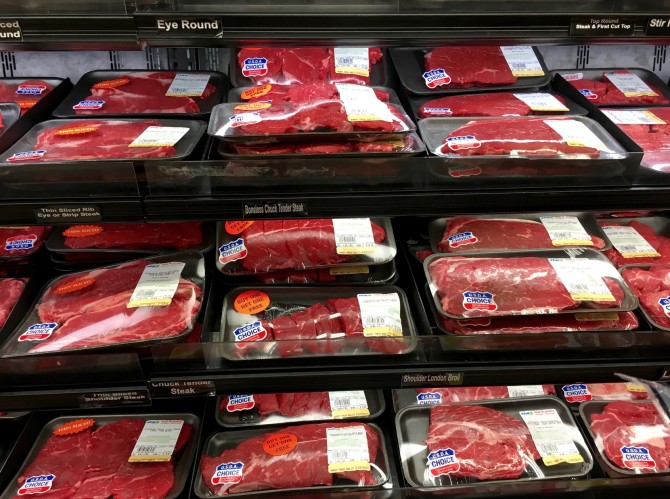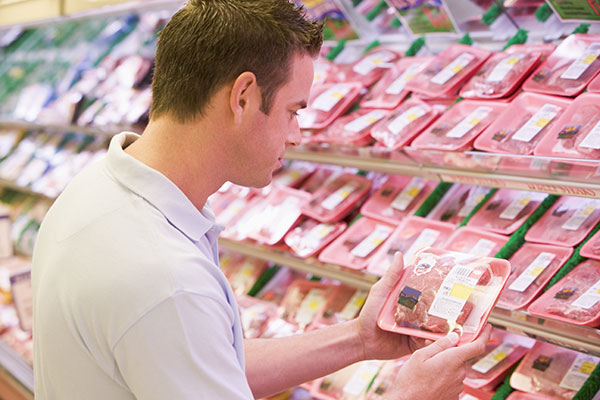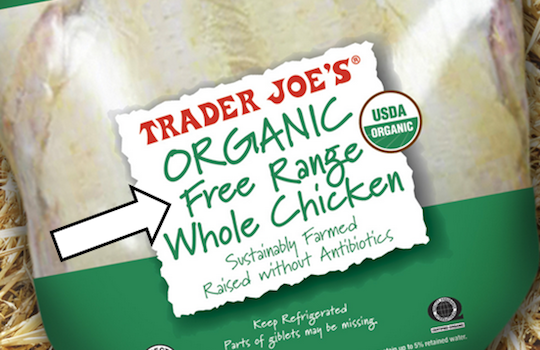“Antibiotic-free” is a term thrown around a lot lately. It is an important term and one that should be getting attention, but what does it really mean? Attention vegetarians: I suggest you stop reading here.
The Misnomer Behind “Antibiotic-Free Meat”

Photo by Andrea Leelike
A lot of times in a supermarket or at a restaurant, you see meat that is labeled “antibiotic-free.” It is important to note that the meat itself never has any antibiotics in it, whether it is antibiotic-free or not. There are strict guidelines by the FDA to ensure that farmers who do use antibiotics on their animals have to stop a certain number of days before killing the animal.
Instead, antibiotic-free meat means that the animal killed to make the meat was not treated with any antibiotics. What does that mean? Well, keep reading.
Why do Farmers Use Antibiotics?
Farmers use antibiotics for a couple reasons, one being to speed up the growth of animals. The other reason is to prevent disease. Animals raised for meat are typically in very close quarters and share everything (food, space, etc). This is because it’s cheapest for the farmer, who needs to get the most meat out of all the space they have. And so, if one of these animals gets an infection or disease, it could spread to all the other animals and wipe out their population of livestock. No livestock means no meat; no meat means no money.

Photo courtesy of euractiv.com
This same thought-process goes for crops as well. If a pest comes and ruins a crop, it ruins all the crops around it as well, and the farmer has no crops to sell for the season. That is why they use pesticides to protect against pests.
Why Is It Bad for Farmer’s to Use Antibiotics?
Aimlessly distributing antibiotics among animals in order to promote growth or prevent disease allows the animals’ bodies to develop a resistance to those antibiotics. To get super science-y on you, when an antibiotic enters your body, it attacks and kills bad bacteria which gets rid of your bacterial infection. However, if you keep giving an animal this antibiotic, every once in a while, there will be a couple bacteria in their body that survive the antibiotic and reproduce (survival of the fittest), creating many more of that antibiotic-resistant bacterium, until they are no longer affected by the antibiotic.
This antibiotic-resistant bacterium can enter the food chain via the animal’s meat and end up in the consumer’s kitchen, and later in the consumer’s gut. If this bacterium causes any serious illness, it will be much harder to find a treatment for it since it is already resistant to antibiotics.
What Can We Do As Consumers?

Photo courtesy of agreenerworld.org
It’s actually very easy for us to do something about this; just don’t buy meat from animals treated with antibiotics. It probably won’t say on the label that it is treated with antibiotics, but you can usually find the meat that specifically says it’s treated without antibiotics. #SpoonTip: Look for the term “antibiotic-free.”
Is It Really Worth It to Buy Antibiotic-Free Meat?

Photo courtesy of marksdailyapple.com
Yes. Luckily, due to the increased demand for antibiotic-free meat nowadays, it is becoming more readily available. The risks of buying meat from animals treated with antibiotics and developing a disease resistant to treatment are huge. If humans keep using antibiotics freely like this it could result in an outbreak of a certain illness that we don’t have a cure for because it is antibiotic-resistant. This threat is especially harmful toward children since they have underdeveloped immune systems.
Ultimately, it is up to you, the consumer, to decide. Whether you buy meat from animals treated with antibiotics or not, it is crucial that you are buying as an informed consumer, and reading articles like these will help us all get there.


